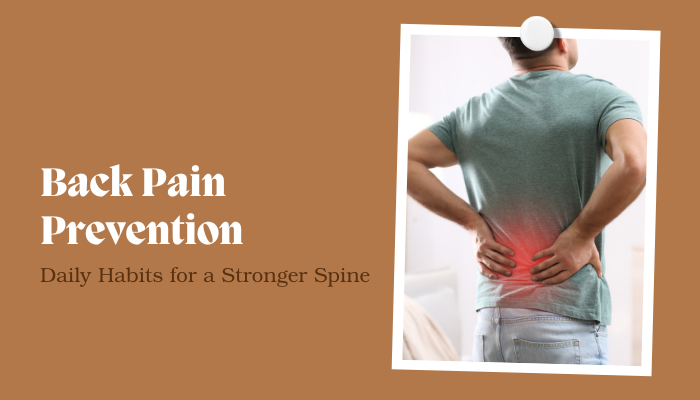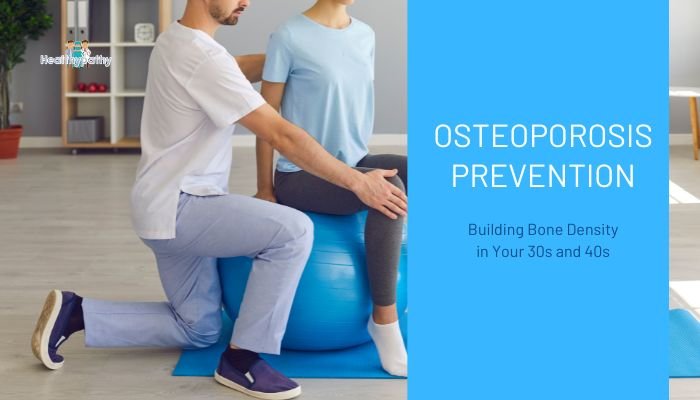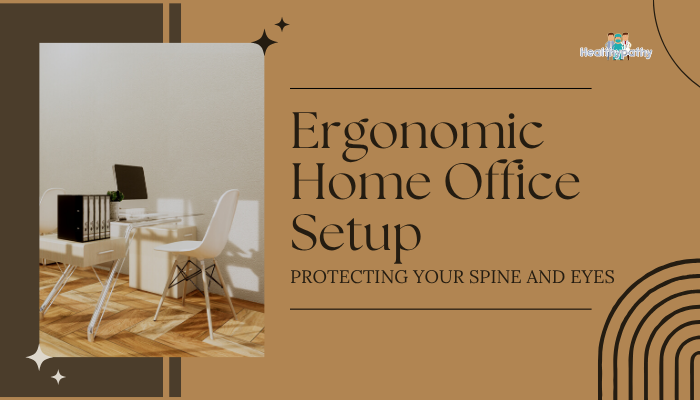Introduction
Back pain is among the most common reasons for missed work and doctor visits, affecting people of all ages. Fortunately, preventing back pain often boils down to consistent, healthy daily habits. By paying attention to posture, integrating targeted exercises, and maintaining overall fitness, you can reduce the likelihood of discomfort and support a stronger, more resilient spine. This guide explores practical tips to help keep your back in top form.
Prioritize Good Posture
Why Posture Matters
Slouching or hunching over a desk strains the spine’s muscles and ligaments. Over time, this can lead to chronic misalignment, tension, and pain. Conversely, standing or sitting upright helps distribute your body weight evenly, reducing stress on the back.
Simple Tips for Everyday
- Desk Setup: Adjust your chair, desk, and computer monitor so that your elbows and knees form 90° angles. Keep your screen at eye level to avoid craning your neck.
- Core Engagement: Gently tighten your stomach muscles to support your lower spine.
- Frequent Breaks: Set reminders to stand up, stretch, and walk around every 30–60 minutes. Prolonged sitting can exacerbate slouching.
Strengthen Your Core and Back Muscles
Targeted Exercises
- Planks: Strengthen the entire core, providing stability to the spine. Start with short holds (20–30 seconds) and gradually increase.
- Bridges: Lie on your back, knees bent, and lift your hips to align with knees and shoulders. This move activates the glutes and helps support the lower back.
- Bird Dog: From hands and knees, extend one arm and the opposite leg, holding for a few seconds. This builds balance and back muscle endurance.
Consistency over Intensity
Even moderate exercises—done regularly—can bolster back and abdominal strength. Short, daily routines often yield more lasting results than occasional intense workouts.
Embrace Movement and Activity
Everyday Movement
- Walk Often: Brisk walks strengthen the spine, keep joints lubricated, and improve circulation.
- Stand More: If possible, use a standing desk or take phone calls standing to reduce prolonged sitting.
Low-Impact Exercises
Swimming or water aerobics reduce stress on joints while still engaging your back muscles. If running or high-impact sports cause discomfort, these gentler options may help maintain cardiovascular fitness without straining your spine.
Smart Lifting and Ergonomics
Lift Safely
- Bend at the Knees: Keep a neutral spine. Squat down, lifting from your legs rather than bending your back.
- Hold Items Close: Bringing objects near your body reduces torque on the spine.
Use Proper Tools
Use carts, dollies, or ask for help with bulky or heavy loads. Overexertion is a leading cause of acute back injuries.
Maintain a Healthy Lifestyle
Balanced Weight
Excess abdominal weight shifts the pelvis forward, straining the lower back. Manage your body weight through balanced nutrition and regular exercise to minimize undue spinal stress.
Sleep on a Supportive Surface
- Mattress Choice: A mattress that’s too soft or too firm can misalign the spine. Consider medium-firm if you’re prone to back pain.
- Pillows: Side sleepers might place a pillow between knees to maintain hip alignment; back sleepers can support the curve of the neck with a suitable cushion.
Mindful Stress Management
Chronic stress can tighten back muscles and exacerbate pain. Techniques like yoga, deep breathing, or meditation help relax tension stored in the back and neck.
Frequently Asked Questions
How often should I do back-strengthening exercises?
Aim for 2–3 focused core/back sessions per week. Consistency is key—short, regular workouts often outperform infrequent intense sessions.
Are standing desks better than sitting all day?
Alternating between sitting and standing can reduce back strain. However, standing too long can also fatigue muscles. Strive for a balance, periodically changing posture.
When should I see a doctor for back pain?
If you experience severe, persistent pain beyond a few weeks, numbness, or weakness in your legs, consult a healthcare professional. Other red flags include pain after trauma or unexplained weight loss.
Does wearing supportive footwear matter?
Absolutely. Shoes with good arch support and shock absorption help maintain proper alignment from the ground up. High heels or worn-out footwear can throw off your posture.
Conclusion
Protecting your spine is crucial for long-term mobility and freedom from chronic pain. By paying attention to posture, exercising core and back muscles, and embracing consistent movement throughout the day, you form a strong foundation for a healthier back. Coupled with safe lifting techniques, stress management, and mindful lifestyle adjustments, these habits can greatly reduce your risk of back pain. Investing in your back’s well-being now pays dividends in comfort and flexibility for years ahead.
References
- National Institutes of Health (NIH). Back Pain and Prevention. Accessed 2023.
- American Chiropractic Association. Preventing Low Back Pain. Accessed 2023.
- Mayo Clinic. Exercises for a healthy back. Accessed 2023.
- Centers for Disease Control and Prevention (CDC). Physical Activity Guidelines. Accessed 2023.






